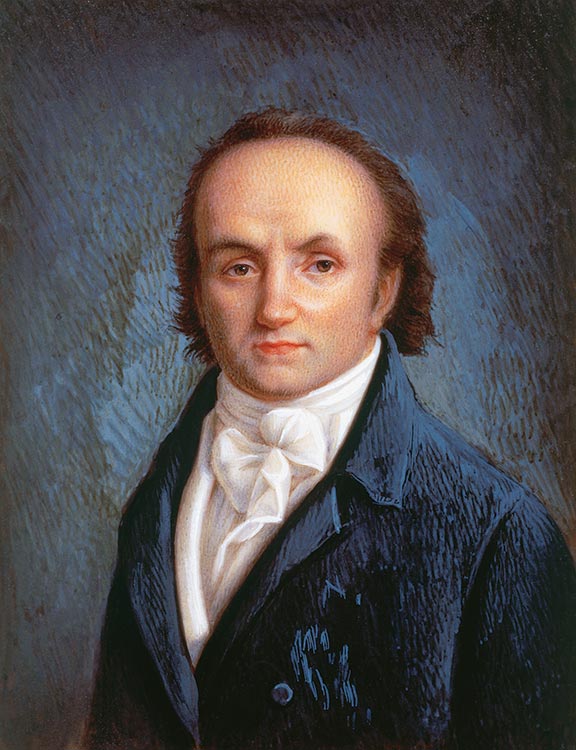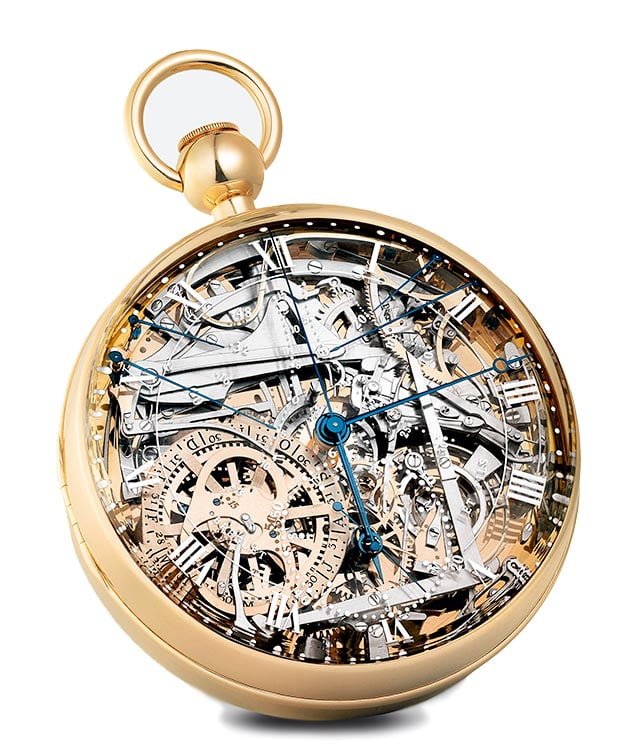Een mechanisch horloge dat de tijd aangeeft en misschien zelfs een complicatie heeft. Niets is te gek voor jou en mij. Maar het is alleen dankzij generaties van innovatieve meester-horlogemakers die consequent probeerden om barrières te doorbreken dat de tijd om je pols gemeengoed is geworden. We presenteren u een aantal oude en recentere uitvindingen en uitvinders. Vandaag deel I.
De tijd begon groot en werd in de loop van de tijd kleiner. In de afgelopen eeuwen zijn enorme uurwerken geëvolueerd tot kleine, delicate uurwerken. Verantwoordelijk voor deze evolutie: visionaire meester-horlogemakers. De geschiedenis van het zak- en polshorloge is rijk. Het aantal meester-horlogemakers met kleine en grote innovaties op hun naam is groot. Een compleet overzicht zou honderden pagina’s in beslag nemen, daarom beperken we ons tot een aantal bijzondere uitvinders en uitvindingen uit het verre en recente verleden.
Van natuurkunde en marketing

Hoe beknopt een verhaal over horloge-uitvindingen ook mag zijn, Abraham-Louis Breguet (1747-1823), geniaal en multitalent op diverse gebieden, zoals natuurkunde en marketing, kan nooit ontbreken. Hij slaagde erin baanbrekende verbeteringen en uitvindingen aan te brengen en zijn creaties in heel Europa te verkopen. Breguet is de man die de tourbillon bedacht, een mechanisme dat het regulerende echappement laat draaien om het constante negatieve effect van de zwaartekracht op de beweging teniet te doen. Een revolutionair concept in een tijd waarin een nauwkeurig uurwerk het ultieme doel was. De tourbillon (Frans voor wervelwind – red.) is oorspronkelijk bedacht voor zakhorloges die consequent rechtop werden gedragen. In een polshorloge dat vaak van positie verandert, is een tourbillon vooral een technisch hoogstandje geworden. De tourbillon in de moderne Breguet Tourbillon Extra-Plat 5377 is klein en verfijnd en past perfect in het automatische uurwerk dat een perifere rotor gebruikt om het zo dun mogelijk te houden.
823 onderdelen
 Breguet was ook de koninklijke horlogemaker van de Franse koning Lodewijk XVI en zijn vrouw koningin Marie-Antoinette. Volgens de legende plaatste de Zweedse graaf Axel von Fersen in 1783 een bestelling bij Breguet voor het meest gecompliceerde zakhorloge dat de wereld ooit had gezien; een geschenk dat de graaf wilde gebruiken om indruk te maken op zijn geliefde koningin en dat Breguet tot het uiterste dreef. De ‘Marie-Antoinette’ (nr. 160) werd voltooid in 1827 – 34 jaar na de dood van de koningin, vier jaar na de dood van Breguet en 44 jaar nadat het horloge werd besteld – en zelfs naar hedendaagse maatstaven was het horloge een wonder van technologie. Het automatische uurwerk, bestaande uit 823 onderdelen, omvatte onder meer minuutherhaling, een eeuwigdurende kalender – een systeem dat als de voorloper van de chronograaf kan worden beschouwd – een gangreserve-indicator en een thermometer, plus Breguet’s uitvinding, de pare-chute schokabsorptie systeem dat het echappement beschermt tegen schokken.
Breguet was ook de koninklijke horlogemaker van de Franse koning Lodewijk XVI en zijn vrouw koningin Marie-Antoinette. Volgens de legende plaatste de Zweedse graaf Axel von Fersen in 1783 een bestelling bij Breguet voor het meest gecompliceerde zakhorloge dat de wereld ooit had gezien; een geschenk dat de graaf wilde gebruiken om indruk te maken op zijn geliefde koningin en dat Breguet tot het uiterste dreef. De ‘Marie-Antoinette’ (nr. 160) werd voltooid in 1827 – 34 jaar na de dood van de koningin, vier jaar na de dood van Breguet en 44 jaar nadat het horloge werd besteld – en zelfs naar hedendaagse maatstaven was het horloge een wonder van technologie. Het automatische uurwerk, bestaande uit 823 onderdelen, omvatte onder meer minuutherhaling, een eeuwigdurende kalender – een systeem dat als de voorloper van de chronograaf kan worden beschouwd – een gangreserve-indicator en een thermometer, plus Breguet’s uitvinding, de pare-chute schokabsorptie systeem dat het echappement beschermt tegen schokken.
Na een tijdje rondzwerven is het originele zakhorloge helaas verdwenen. Aanleiding voor Nicolas G. Hayek (1928-2010), hoofd van de Swatch Group, eigenaar van horlogehuis Breguet en curator van het levenswerk van Abraham-Louis, om een ’Marie-Antoinette’ te reconstrueren op basis van de weinige overgebleven tekeningen. In april 2008, na vier jaar onderzoek en constructie, werd het zakhorloge onthuld in Le Petit Trianon, het paleis van Marie-Antoinette in Versailles dat werd gerestaureerd met fondsen van Breguet. De nieuwe ‘Marie-Antoinette’ Grande Complication No. 1160 verbaasde de horlogewereld opnieuw.
Meer complicaties
Morgen in deel II nemen we je mee naar een afgelegen vallei in de Zwitserse Jura, beroemd om zijn ingewikkelde bewegingen. Morgen laten we u enkele technische wonderen zien die uit de Vallée de Joux komen, maar we reizen ook naar een afgelegen horlogevallei in Duitsland met een vergelijkbare geschiedenis en naar de Zwitserse stad Le Locle om getuige te zijn van de geboorte van de nouvelle horlogerie.
Uitvinders en uitvindingen Deel II: Een heel bijzondere vallei






